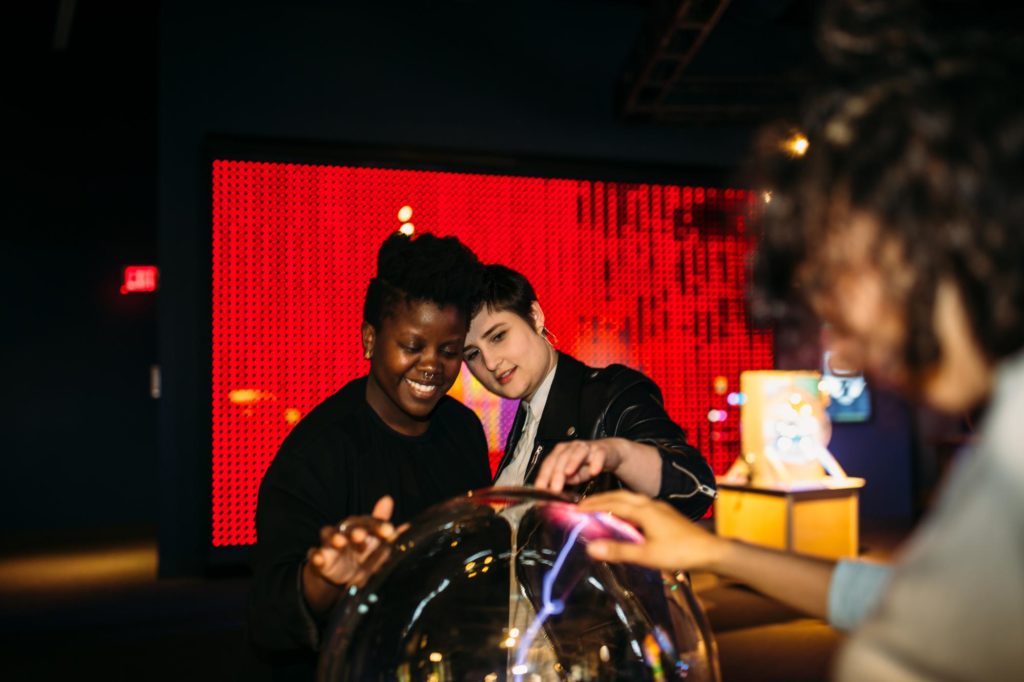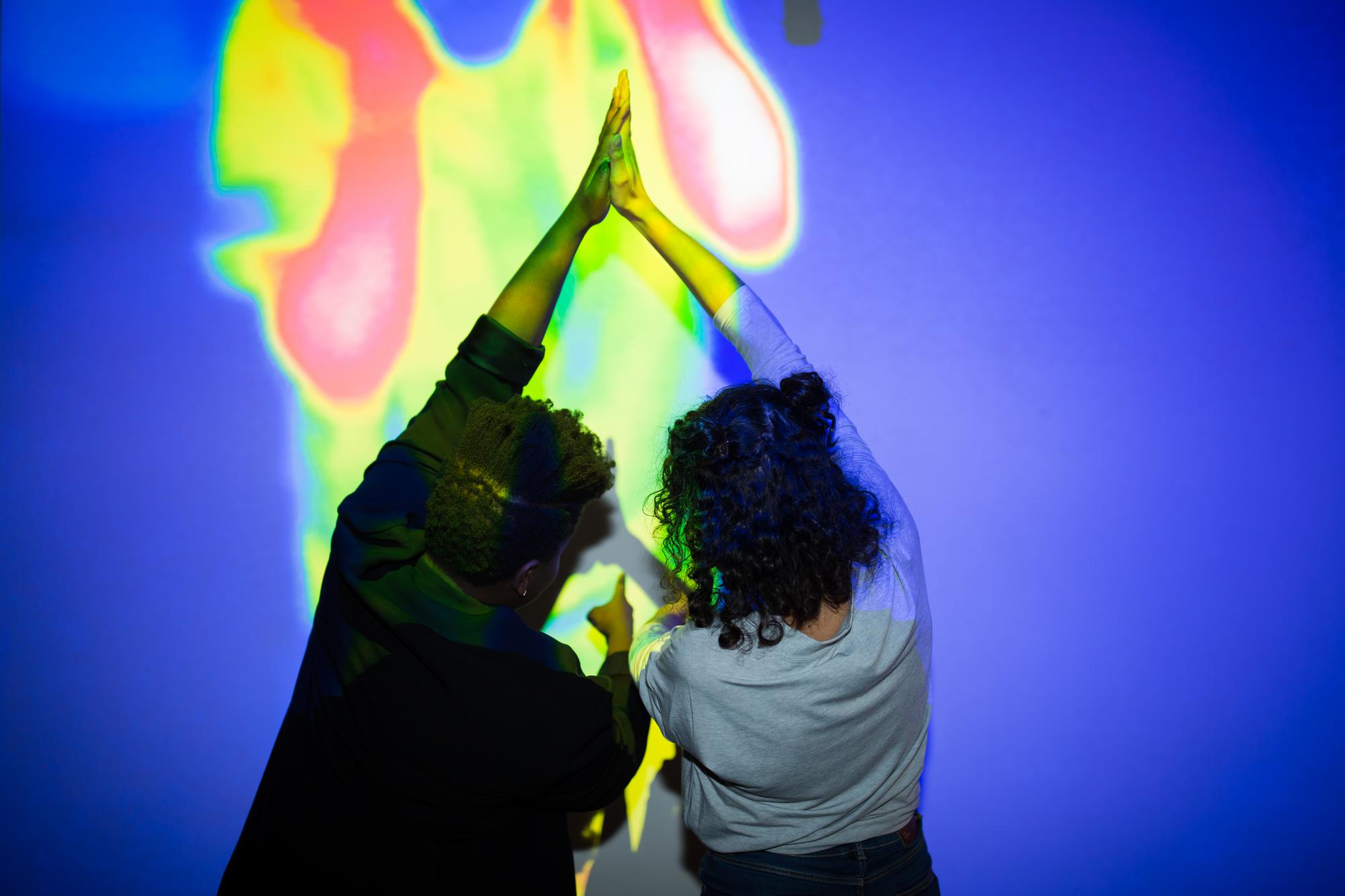Please note: This article was published in 2019, prior to COVID-19 health and safety regulations, which are now in place at our dome. We remind visitors that Public Health Orders currently advise against meeting outside of our households whether that's for first dates or play dates.
Jessica McQuiggan got married in a small ceremony in Ontario by the Humber River. In front of an intimate crowd of approximately 50 family and friends, the recent psychology doctorate and her partner exchanged evidence-based wedding vows. Jessica, previously the Manager of Research & Evaluation at Science World, reminisces on that day and says a significant theme in her promise was rooted in “doing things together.”
“It’s a phenomenon called self-expansion,” says Dr. Jessica Maxwell, Assistant Professor & Lecturer at the University of Auckland and PhD in social psychology. Apart from sharing the same given name, these two scientists share a mutual friend: Dr. Maxwell's lab partner assisted Jessica in writing her vows. And while Dr. Maxwell was not in attendance for this well-researched exchange, she backs shared activity as one of the key components of attraction.
“When you learn new things about the person you’re with it broadens your horizons and deepens your intimacy. That feels like experiencing the greatest part of falling in love again and again.”
While it may sound like planning momentous occasions throughout your relationship, Dr. Maxwell argues healthy self-expansion is actually a daily exercise which established couples can do by learning a new recipe together or downloading a free language app. “In essence, it’s a way to date your partner no matter how long you’ve been together.”
In fact, developing a sense of discovery about someone you’re attracted to is important to both long-term and new couples when it comes to developing intimacy. The difficulty is that typical first date environments aren’t often set up to facilitate this kind of connection between people.
The Key Components

Despite being randomly assigned, research on college campuses found that students with rooms next to each other were more likely to be closer friends than if they were down the hall. Using proximity as a way to facilitating attraction is what most dating apps attempt to do when connecting strangers to each other, but it’s only one of the many key basic components of attraction. Dr. Maxwell points to familiarity and similarity as other points of connectivity.
Opportunities to discover similarities tend to happen more organically when the date is interactive. This doesn’t necessarily mean crossing the Capilano Suspension Bridge or hiking the Chief. Even asking engaging questions that go farther than surface-level conversations could help uncover similarities. In fact, using similarities as a way to experience self-expansion is what led psychologist Arthur Aron to develop the, now viral, “36 Questions To Fall in Love.”
“One of the aspect of self-disclosure is that it tends to be self-reciprocal,” Dr. Maxwell explains. “A couple who chatted online could have a chance to discover they were both in Girl Scouts or did a trip somewhere at the same age, which they maybe wouldn’t have a chance to learn about if they weren’t engaged interactively.”
However, setting, Dr. Maxwell stresses, is equally as important.
“You’re signalling your intentions when you ask someone on a date,” she says. “Depending on where someone invites you, you can probably infer whether you have things in common or if it’s someone you’d get along with.”
Dr. Maxwell encourages avoiding a movie and popcorn. While public, things like going for a drink can incite feelings of “being cornered.”
“You could argue that being in a public place might not activate a fight-or-flight response in a way that being private place would,” she says. “But being in a dark bar might trigger those tendencies that feel ‘dangerous.’”
Inviting a date to a place with shared nostalgia, instead, like a neighbourhood walk about Commercial Drive or a visit to your city’s science centre, may not only be a way to share similarities but also to share familiarity.
“Seeing an exhibit together might ask you to share deeper traits with a person,” she says. “Interestingly enough, a nostalgic place, like Science World, would make someone organically want to disclose a lot of their childhood memory.”
